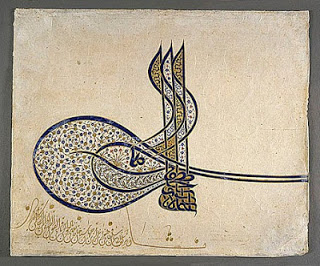The other day, I attended an artist’s talk for an exhibition opening at the Ingres Museum in Montauban, a delightful small town in South France.
It was thought-provoking, albeit not perhaps quite as the artist intended.
Flyer for the Ingres Museum show on Vincent Carpet
Vincent Carpet is a French artist, born in Paris in 1958, who came to art because there seemed nothing else viable for him to do.
His career really took off, apparently, when he exhibited with two other artists in a very controversial show, Masculin-Féminin, le sexe de l’art, at the Centre GeorgesPompidou Paris. Since then, he has increasingly specialized in using an artist’s work to develop his own version of that work, often with what seems to be a very ironic eye.
It was in this context that he is now exhibiting his work in the Ingres Museum Montauban is Ingres’ home town and the museum owns a huge number of Ingres’ drawings and many important paintings. So Vincent Corpet was invited to select a number of Ingres’ works, paintings and drawings, and develop his own reactive work, to be hung alongside the original work. The show is called Vincent Corpet vit au long d'Ingres.
His talk at the Museum, given to a very small number of people, was ironic, rich in facile remarks and occasional honest moments, such as when he admitted getting totally bored with trying to find what else to do and say when faced with all the multitude of Ingres’ portraits.
Another such moment was when he said he couldn’t paint hands or feet, so he simply stuck his hand or foot in paint and walked on the canvas to leave the imprint. His method of work, apparently, is to make a black and white, quick and dirty copy of the original painting, with the canvas on the floor, as one personage.
He then changes to being another person, in his mind, and selects out things to emphasise and reinterpret, mostly with fantasy animals, upside down, sideways or whatever. He then changes again to another person and covers the rest of the canvas in some simple colour, painted on rather as one would paint a wall, it appeared. Only when the three stages are completed is the canvas placed upright.
Vincent Corpet at work
His drawings were simpler and more painterly, but very repetitive, with sexual forms predominating, with a lot of smudging, erasing the black with spirits to get tonal changes.
He had also made the selection of Ingres’ drawings to go with his drawings, but alas, many of them were so faint that they were almost invisible. He had apparently made a very quick selection on the web of these drawings, not seeing them in the original, which was perhaps sometimes unfortunate.
The overall impression on was left with after this talk was that this was an artist who had perfected the game of parleying his skills into a career in the official art world. Derivative and shallow art is apparently quite acceptable, as long as there is shock value. To me, his talk was short on depth of thought, and thus on impact.
Tackling a take-off of Ingres, himself very much a product of the 19th century traditional art world and not so hot on accurate drawing of the human body, for instance, is not an easy task. Nonetheless, the “translation” done by Vincent Corpet into 21st century idiom simply reminded me of the existence of a potentially shallow, transitory and basically ugly sector of today’s art world.
In essence, the talk became a reminder to me personally as an artist that one needs to try to dig as deeply and thoughtfully as possible inside one’s own world, not to copy and not to be facile.
Not easy!












































